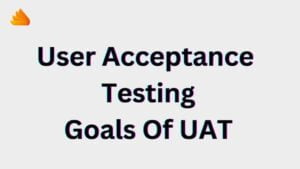BDD | Pros | Cons | Tools | Automation | 3 Amigos
BDD stands for Behavior-Driven Development.
It is a software development methodology that aims to improve collaboration and communication between developers, quality assurance (QA) teams, and business stakeholders.
BDD encourages a shared understanding of the desired behaviour of a software system through the use of a common language understood by all parties involved.
In BDD, the behaviour of a software system is described in terms of user stories or scenarios that capture the expected interactions and outcomes. These scenarios are typically written using a natural language format that is easily understandable by non-technical stakeholders. The scenarios often follow the “Given-When-Then” format, where each scenario specifies a precondition (Given), an action or event (When), and an expected outcome (Then).
BDD promotes collaboration between different roles by encouraging discussions around the desired behaviour of the system before implementation begins. Developers, QA testers, and business stakeholders work together to define and refine the scenarios, ensuring everyone understands the expected functionality.
BDD frameworks and tools provide mechanisms to automate the execution of these scenarios, turning them into executable specifications. This allows for automated testing and validation of the system’s behaviour against the specified scenarios, helping to ensure that the implemented software meets the desired requirements.
Overall, BDD aims to improve software quality by fostering collaboration, shared understanding, and a focus on behaviour rather than just technical implementation details.
Here are some key advantages of adopting BDD
Enhanced Collaboration
BDD encourages collaboration between developers, QA testers, and business stakeholders. By using a common language and shared understanding of system behaviour, all parties can contribute to defining and refining requirements, leading to better alignment and reduced miscommunication.
Clearer Requirements
BDD emphasizes writing executable specifications in a natural language format. This approach helps to clarify requirements and expectations, reducing ambiguity and enabling stakeholders to provide more specific feedback early in the development process.
Improved Test Coverage
BDD scenarios serve as executable specifications that can be automated and used for testing. By focusing on behaviour, BDD helps ensure comprehensive test coverage, as scenarios are designed to cover different aspects and interactions of the system. This leads to more effective testing and higher-quality software.
Early Bug Detection
BDD encourages defining scenarios upfront, allowing early bug detection. Discussing and clarifying requirements before implementation can identify and address issues and misunderstandings early on, reducing the likelihood of costly rework and bug fixing later in the development cycle.
Increased Agility and Flexibility
BDD promotes a test-driven and iterative development approach. Scenarios serve as a feedback loop, guiding development and allowing for frequent adjustments. BDD supports change and enables teams to quickly adapt to evolving requirements or business needs.
Improved Documentation
BDD scenarios provide living documentation that captures the system’s behaviour. These scenarios can serve as a valuable reference for developers, testers, and future team members, facilitating knowledge transfer and maintaining a clear understanding of the system’s functionality.
Better Customer Satisfaction
By focusing on behaviour and involving stakeholders throughout the development process, BDD helps ensure that the delivered software meets the needs and expectations of the end users. This increases customer satisfaction and reduces the risk of developing software not aligning with user requirements.
Cons of BDD
Initial Learning Curve
BDD introduces a new way of thinking and writing specifications, which may require a learning curve for team members who are unfamiliar with the BDD approach. This initial learning phase can slow down the adoption of BDD and may require additional training or support.
Overhead in Documentation
BDD encourages the creation of detailed scenarios to describe the behaviour of the system. While this can be beneficial for clarity, it also introduces additional overhead in terms of documentation. Maintaining and updating a large number of scenarios can be time-consuming and may require continuous effort.
Increased Complexity in Test Automation
BDD scenarios serve as executable specifications that can be automated for testing. However, implementing and maintaining test automation for BDD scenarios can be more complex compared to traditional testing approaches. It requires the use of specific frameworks and tools designed for BDD, which may involve a learning curve for automation engineers.
Time and Effort for Collaboration
BDD relies heavily on collaboration and communication among team members, including developers, testers, and business stakeholders. This collaborative effort can take time and effort, especially when working with distributed teams or when there are multiple stakeholders with different perspectives and priorities.
Dependency on Stakeholder Availability
BDD heavily relies on stakeholders’ active participation and availability throughout the development process. If stakeholders are unavailable or not actively engaged, it can hinder the effectiveness of BDD, leading to delays in gathering requirements, clarifications, and feedback.
Potential Overemphasis on Technical Details
While BDD aims to focus on behaviour, there is a risk of scenarios becoming overly focused on technical implementation details rather than the actual behaviour and outcomes desired by stakeholders. This can lead to scenarios that are difficult to understand for non-technical stakeholders and may reduce the effectiveness of BDD in terms of collaboration and shared understanding.
Misinterpretation of Scenarios
BDD scenarios are written using a natural language format, which can be prone to misinterpretation or ambiguity. If scenarios are not clearly written or lack sufficient detail, it can lead to misunderstandings and misalignments between different team members, resulting in incorrect implementation and wasted effort.
What are 3 Amigos in Behavior-Driven Development
In BDD (Behavior-Driven Development), there are three key amigos or roles that play important roles in the BDD process. These roles collaborate closely to ensure effective communication, shared understanding, and successful implementation of BDD practices. The three amigos in BDD are:
Business Stakeholders/Product Owners
Business stakeholders or product owners represent the interests of the end users and are responsible for defining the product vision, requirements, and priorities. Their role in BDD is to provide input and clarify the desired behaviour of the system from a business perspective. They actively participate in the creation and refinement of BDD scenarios, ensuring that the specified behaviour aligns with the business goals and objectives.
Developers
Developers are responsible for implementing the software system based on the specified behaviour outlined in the BDD scenarios. They collaborate with business stakeholders to understand the requirements and ensure that the implementation accurately reflects the expected behaviour. Developers use BDD scenarios as guidelines for coding and test development, writing code that satisfies the defined scenarios and behaviours.
QA/Testers
Quality Assurance (QA) professionals or testers are involved in BDD to ensure that the implemented system meets the specified behaviour and fulfils the requirements. They collaborate with business stakeholders and developers to understand the scenarios and help identify potential edge cases or additional scenarios for testing. QA/testers automate and execute the BDD scenarios as tests, validating the system’s behaviour and detecting any deviations or defects. They play a crucial role in maintaining the quality and reliability of the software.
Top BDD Tools
There are several BDD tools available that can assist in implementing and executing Behavior-Driven Development (BDD) practices. Here are some popular BDD tools:
Cucumber
Cucumber is one of the most widely used BDD frameworks. It supports multiple programming languages such as Java, Ruby, JavaScript, and more.
Cucumber allows teams to write feature files using the Gherkin language, which uses a structured format for defining scenarios. It integrates with various testing frameworks and provides a clear separation between the specification and implementation code.
It is one of the most famous tools in the market.
SpecFlow
SpecFlow is a BDD framework specifically designed for .NET applications. It enables teams to write BDD scenarios in the Gherkin syntax and supports integration with popular .NET testing frameworks like NUnit and MSTest. SpecFlow allows for test automation and generates living documentation based on the scenarios.
Behave
Behave is a BDD tool for Python. It provides support for writing BDD scenarios using the Gherkin syntax and integrates well with Python’s testing ecosystem.
Behave allows teams to define step definitions that link scenarios to the implementation code and provides a structured approach to writing and executing BDD tests.
JBehave
JBehave is a BDD framework for Java applications. It follows the Gherkin syntax and supports the creation of human-readable scenarios.
JBehave integrates with popular Java testing frameworks such as JUnit and TestNG and provides features for running and reporting BDD tests.
Gauge
Gauge is an open-source BDD framework developed by ThoughtWorks. It supports multiple programming languages such as Java, C#, Ruby, and more. The gauge uses Markdown for writing scenarios and provides plugins for integration with various IDEs, test runners, and automation tools.
Jasmine
Jasmine is a popular BDD framework for JavaScript. It allows teams to write BDD-style tests using a clean and readable syntax. Jasmine provides built-in assertions, test spies, and test doubles, making it suitable for testing JavaScript applications in a BDD manner.
Suitable for Below types Of Projects
Behavior-Driven Development (BDD) can be beneficial for various types of software development projects. While BDD is applicable to a wide range of projects, its suitability may vary based on certain factors. Here are some project types where BDD can be particularly beneficial:
Complex Projects with Evolving Requirements
BDD can be valuable in projects where requirements are complex and likely to change over time. By focusing on behaviour and collaborating closely with stakeholders, BDD helps in maintaining alignment and adaptability, making it easier to accommodate evolving requirements.
Collaborative Projects with Multiple Stakeholders
BDD promotes collaboration between different stakeholders, including business representatives, developers, and testers. It is particularly beneficial in projects where there are multiple stakeholders with diverse perspectives and requirements. BDD facilitates effective communication and shared understanding among team members, ensuring that the implemented software meets everyone’s expectations.
Agile and Iterative Development
BDD aligns well with Agile development methodologies, such as Scrum or Kanban. Its emphasis on frequent collaboration, quick feedback loops, and iterative development makes BDD a suitable choice for Agile projects. BDD scenarios provide a foundation for test-driven development and continuous integration, enabling the team to deliver working software in short iterations.
Test Automation and Continuous Integration
BDD scenarios can serve as executable specifications and act as a basis for automated tests. BDD frameworks and tools provide capabilities for automating the execution of scenarios, facilitating regression testing and continuous integration.
Projects that prioritize test automation and continuous delivery can benefit from the structured and automated testing approach provided by BDD.
Domain-Driven Design (DDD) Projects
BDD aligns well with the principles of Domain-Driven Design. BDD scenarios can help capture and express domain-specific behaviours and requirements, promoting a shared understanding between domain experts and technical team members.
BDD supports the development of software that closely models the domain, leading to better alignment and more effective solutions.
What is the correct way to use BDD and Use it efficiently for your project
To use Behavior-Driven Development (BDD) effectively and efficiently for your project, consider the following guidelines:
1. Define Clear Goals and Scope:
Clearly define the goals, scope, and desired outcomes of your project. Identify the key behaviours and functionalities that need to be implemented.
This will help you focus on the most important aspects and ensure that your BDD efforts are targeted and effective.
2. Involve Stakeholders Early:
Engage stakeholders, including business representatives, product owners, and end users, from the early stages of the project.
Collaborate with them to understand their needs, expectations, and desired behaviours. Involve them in the creation and refinement of BDD scenarios to ensure that they align with the business goals.
3. Write Clear and Concise Scenarios:
Use the Gherkin syntax or a similar structured format to write your BDD scenarios. Make sure the scenarios are clear, concise, and focused on behaviour.
Use specific examples and concrete language to describe the expected behaviour of the system. Avoid technical jargon and keep the scenarios understandable to non-technical stakeholders.
4.Collaborate and Communicate:
Foster collaboration and communication between stakeholders, developers, and testers. Regularly hold meetings, workshops, or discussions to clarify requirements, address questions, and resolve any ambiguities. Encourage open dialogue and active participation from all team members to ensure a shared understanding of the system’s behaviour.
5. Automate and Execute Scenarios:
Leverage automation tools and frameworks to automate the execution of BDD scenarios as tests. Use appropriate testing frameworks and tools that integrate well with your development environment.
Automating the scenarios allows for efficient and repeatable testing, reducing the manual effort required for validation.
6. Continuously Refine and Improve
BDD is an iterative process. Regularly review and refine your BDD scenarios based on feedback, new insights, or changes in requirements.
Update and maintain the scenarios as living documentation that reflects the current behaviour of the system. Continuously seek feedback from stakeholders and make necessary adjustments to ensure alignment.
7. Foster a Collaborative Culture
Cultivate a collaborative and inclusive culture within your project team. Encourage teamwork, shared responsibility, and respect for diverse perspectives.
Foster an environment where stakeholders, developers, and testers feel comfortable asking questions, providing feedback, and actively participating in the BDD process.
8. Provide Adequate Training and Support
Ensure that team members receive proper training and support to understand and effectively use BDD practices and tools.
Provide resources, documentation, and mentoring to help team members embrace BDD and adopt it successfully in their work.
Remember that the successful implementation of BDD requires commitment, active participation, and ongoing refinement. It is crucial to regularly evaluate the effectiveness of your BDD practices and make adjustments as needed to optimize their efficiency and value for your specific project.
Difference between Tdd and BDD
| Aspect | TDD | BDD |
|---|---|---|
| Focus | Testing code functionality | Defining behaviour and specifying requirements |
| Key Element | Test cases (unit tests) | Scenarios (executable specifications) |
| Language | Developer-centric | Stakeholder-centric |
| Syntax Format | May use programming language-specific syntax | Gherkin syntax (Given-When-Then) |
| Collaboration | Primarily between developers and testers | Involves business stakeholders, developers, and testers |
| Communication | Emphasizes technical details and implementation | Focuses on shared understanding and behaviour |
| Test Granularity | Tests individual units or components | Tests behaviour and interactions of the system |
| Test Coverage | Focuses on code coverage | Covers system behaviour and end-to-end scenarios |
| Documentation | Code-level documentation (comments, annotations) | Living documentation through executable specifications |
| Test Execution Automation | Testing frameworks used for automation | Testing frameworks used for automation |
| Implementation Approach | Code is developed to pass the tests | Code is developed to fulfil the specified behaviour |
| Agile Alignment | Compatible with Agile methodologies | Compatible with Agile methodologies |
TDD focuses on verifying the functionality of individual units of code, while BDD emphasizes specifying and validating the desired behaviour of the system as a whole.
Role of Gherkin in BDD?
Gherkin plays a vital role in Behavior-Driven Development (BDD) as it serves as the language and syntax used to write executable specifications. Here are the key roles of Gherkin in BDD:
1. Shared Understanding
Gherkin provides a structured and human-readable format for writing specifications that can be understood by stakeholders with different technical backgrounds. It helps create a shared understanding among business representatives, developers, and testers about the desired behaviour of the system.
2. Communication
Gherkin serves as a common language that facilitates effective communication and collaboration among stakeholders. By using Gherkin, stakeholders can express their requirements, expectations, and scenarios in a clear and unambiguous manner. It enables better communication between technical and non-technical team members, reducing misunderstandings and ensuring that everyone is on the same page.
3. Specification Definition
Gherkin is used to define the specifications or acceptance criteria of a feature or functionality. By writing scenarios using Gherkin’s Given-When-Then syntax, the behaviour and outcomes expected from the system are documented in a structured manner. Gherkin scenarios help capture the essential aspects of the feature and provide guidance for implementation and testing.
4. Test Automation
Gherkin scenarios are executable specifications that can be automated and executed as tests. BDD frameworks and tools use Gherkin syntax to map scenarios to automation code, allowing teams to automate the validation of system behaviour. Test automation based on Gherkin scenarios ensures that the system meets the specified requirements and behaves as intended.
5. Living Documentation
Gherkin scenarios act as living documentation that remains up-to-date with the current behaviour of the system. They provide a clear and accessible reference for stakeholders to understand the system’s functionality, ensuring that the documentation stays in sync with the evolving requirements and implementation.
6. Collaboration and Refinement
Gherkin scenarios encourage collaboration among stakeholders to refine and improve the specifications. By involving business representatives, developers, and testers in the process of writing and reviewing Gherkin scenarios, teams can ensure that the scenarios accurately reflect the desired behaviour and address edge cases or alternative flows
Overall, Gherkin plays a crucial role in BDD by enabling effective communication, capturing requirements, guiding implementation and testing, automating validation, and providing living documentation. It serves as a bridge between business stakeholders and technical team members, ensuring a shared understanding and driving the development of software that meets the desired behaviour.






Post Comment